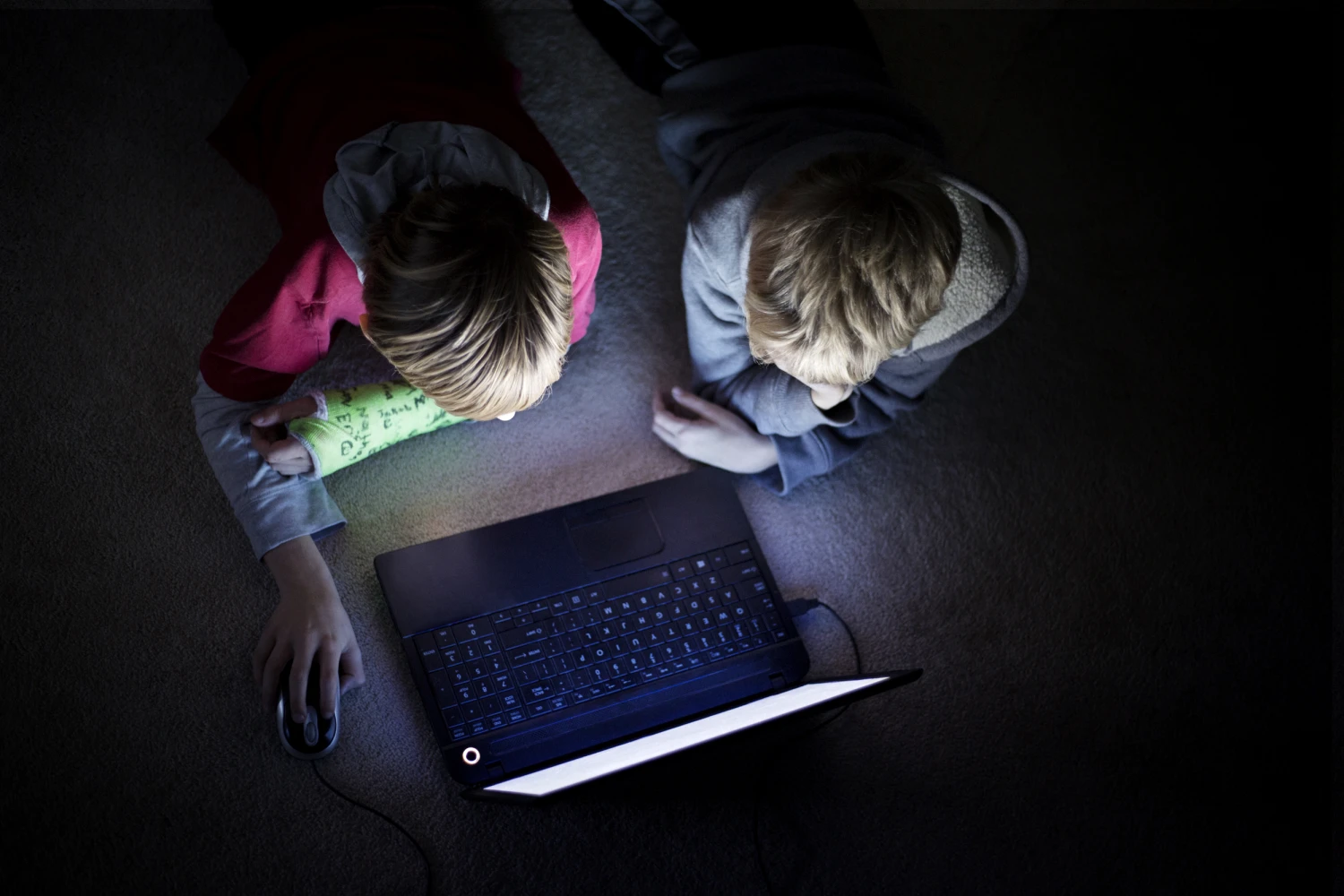If you grew up in the early 1980s or earlier, you’ll remember how hard it was to get your hands on any racy material—lingerie ads, a Playboy magazine on a store shelf, or something hidden away at home.
But since the internet arrived, we’ve entered a whole new era of exposure to explicit photos and videos.
Sure, the internet has endless benefits and has made our lives infinitely better. But as the saying goes, with great power comes great responsibility.
Kids are seeing, sharing, and even “learning” from sexually explicit content online, creating a new set of challenges—and it all starts with parents.

Why It’s Important to Talk to Your Kids About Porn
First off, it’s normal for young people to be curious about sexual images and videos. After all, we’re sexual beings with inquisitive minds. But how you approach the topic with your child, tween, or teen makes all the difference.
It’s crucial to broach the subject with an open, non-judgmental attitude—free of shame. The goal isn’t just to educate and protect, but to make them feel safe, not like they’ve been “caught” or done something wrong. Shaming them could teach them that pleasure deserves punishment, which is harmful.
We already live in a world where sex is wrapped in shame, guilt, and taboo—especially for women. We don’t want to raise adults who see sexuality as something to hide. Instead, we want kids to grow into adults who normalize exploration and pleasure, all while staying safe and informed.
Let’s take a look at school sex ed, too. Most of us can probably agree that the sex ed we got focused only on prevention: avoiding pregnancy, stopping STIs, using condoms. Some curricula even push abstinence. This kind of education only highlights the “dangers” of being sexually active.
Were you ever taught about pleasure, erogenous zones, or the benefits of masturbation and orgasms? Probably not. Some didn’t get any sex ed at all. Could this fuel even more shame?
When kids stumble on porn without proper sex ed, it’s often unhealthy. Many struggle to tell fantasy from reality, leading to unrealistic expectations about sex.
We know real sex rarely looks like porn— which is often aggressive, violent, stereotyped, and full of exaggerated power dynamics. This can create false ideas: that girls are always ready for sex, crave rough intimacy, or exist solely for a boy’s pleasure.
Put simply: if you’re a parent of young kids, chances are they’ll encounter or even intentionally watch porn.
And explicit material isn’t limited to porn sites. It can pop up in spam emails, from typos when typing a web address, in search results for innocent terms with unintended sexual meanings, or in pop-up ads.
What’s more, you can’t control everything your child sees. They might be exposed to porn at a friend’s house or get links sent by peers.
Tips for Talking to Your Kids About Porn
There’s no “perfect” way to do this, but staying calm, understanding, and non-judgmental is key. Think of it as a teachable moment, not a chance to shame them.
For Kids Under 10
If your child is under 10, start by letting them know they might come across porn—and that you’re always there to talk if they do. Reassure them you’ll help them process what they see.
You can also start normalizing healthy affection: hugging, physical closeness, and talking about consensual sex between adults (consent is a big part of intimacy).
Use correct anatomical terms like “penis” and “vagina.” If it helps, use educational books. Keeping the conversation simple and direct can reduce shock or discomfort, helping them feel comfortable with their bodies and different anatomies.
Letting them know their feelings are normal creates a safe space for them to explore their sexuality as they grow.
For Middle Schoolers and Older
This is the age when puberty hits, and kids are more likely to encounter porn—whether by accident or on purpose. That’s why talking to them before puberty is so important.
As they get older, keeping the conversation going about sex and sexuality helps reduce shame and prepares them for healthy views on sex.
Tweens and teens are in an awkward phase, so timing matters. Try casual settings instead of a formal “we need to talk” chat—like during a car ride or walk. Less eye contact can make it easier for them to open up.
Avoid lecturing or firing off questions. Instead, make it an ongoing dialogue. Talk about how porn sex differs from real sex: that first-time sex (and all sex, really) won’t look like what they see on screen, which can help them avoid problematic experiences.
Explain that bodies aren’t just for others’ entertainment—that porn is staged, not a realistic depiction of sex. Emphasize that real sex is about intimacy, exploration, care, and consent.
It’s also critical to discuss consent and boundaries. A lot of porn shows “consensual non-consent” or violence that looks like rape. Your child needs to understand: none of that is okay without clear, enthusiastic consent from both people. Exploration is normal, but violence without consent is illegal and morally wrong.
Finally, normalize their feelings of sexual arousal. This paves the way for a healthy sex life later. Of course, also teach them about the risks of unsafe sex, unwanted pregnancy, contraception, and the importance of physical and emotional safety.
By letting them know arousal is normal and that you’re always there to talk, they’ll be more likely to practice safe sex and discover pleasure—when they’re ready, whether alone or with a partner.
In short: create a safe space free of shame, judgment, and guilt. Take time to teach them about sex, how porn isn’t real, staying safe, and consent.
When you open up a caring line of communication, you’re setting them up to be sex-positive, realistic about sex, and ready to enjoy sex and masturbation in healthy ways when the time comes.